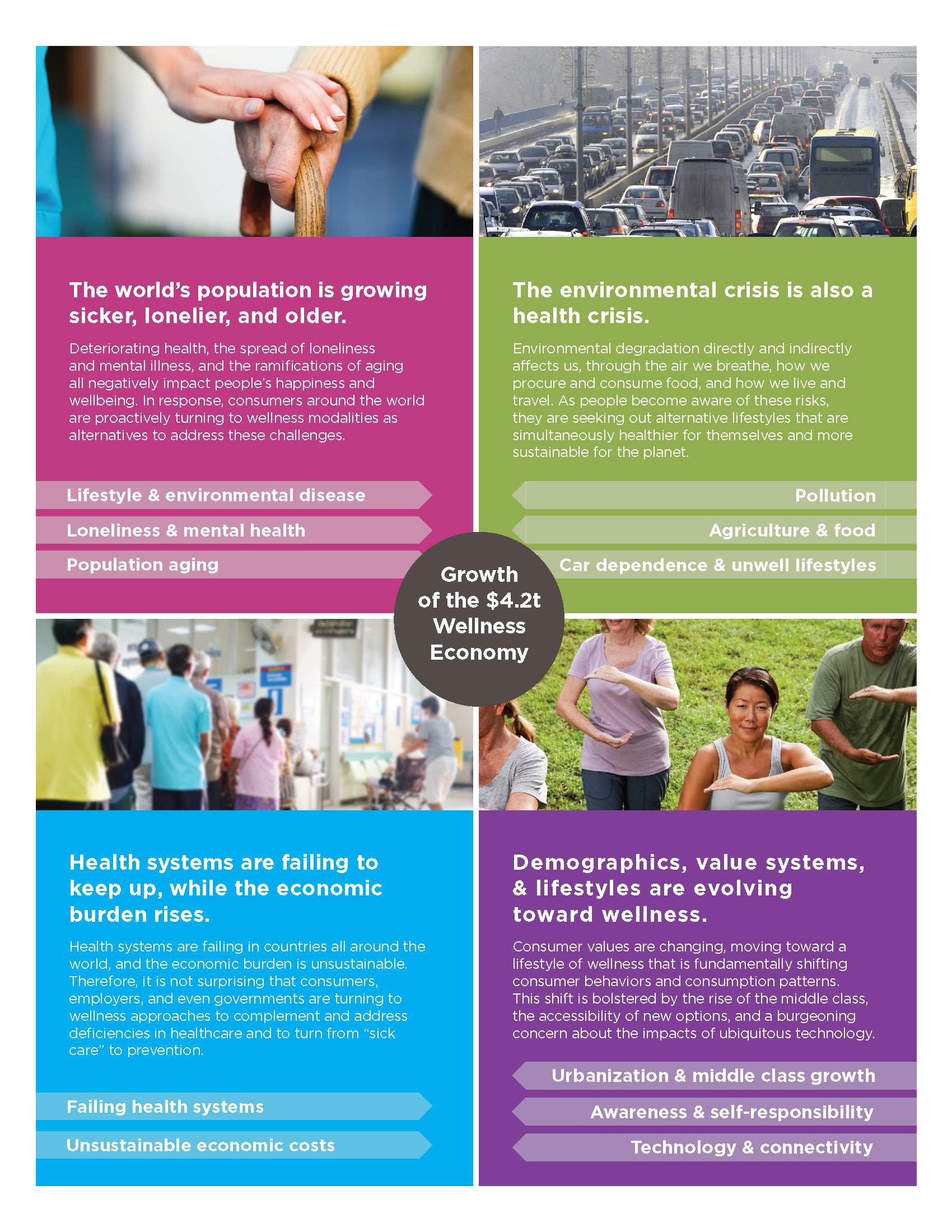KEY DRIVERS OF WELLNESS
Wellness is a word that was not often spoken or seen in print just 10 years ago. Yet, in the last few years, it has become ubiquitous in consumer and trade media and has entered the vernacular all around the world. Within a relatively short span of time, wellness has emerged as a dominant lifestyle value, driving interest in fitness, healthy eating, self-care, mindfulness, stress reduction, wellness vacations, healthy aging, complementary medicine, holistic health and other wellness practices. As consumer interest in all things related to wellness accelerates, wellness is becoming a selling point for all kinds of products and services—from food and vitamins to real estate and vacation packages, and from gym memberships and healthcare plans to meditation apps and DNA testing kits.
Wellness is estimated by the Global Wellness Institute to be a multi-trillion-dollar market, with global spending exceeding $4 trillion every year since 2017. Its growth rate has consistently outpaced global GDP growth, with positive gains even in years of global economic downturn (except during the 2020 pandemic year). What accounts for the seemingly unstoppable growth of wellness and its proliferation throughout the economy? In recent decades, vast economic, technological, social, demographic and environmental changes have transformed every aspect of our lives—our homes and communities, food, work, shopping, education, friendship, leisure, travel, etc.—with both positive and negative impacts on our health and wellbeing. The growth of wellness practices and businesses is fundamentally a consumer response to these developments, and this response is turning into a major societal and economic force.
Four macro forces are propelling consumer demand and the ongoing robust growth of the wellness economy:

For more information:
- GWI’s 2019 white paper Understanding Wellness: Four Global Forces Driving the Growth of the Wellness Economy examines the four macro forces propelling consumer demand and the ongoing, explosive growth of the wellness economy around the world.
- GWI’s 2022-2023 Wellness Policy Series explores the global movements that have been working toward improved human health and well-being and makes the case for why wellness policy is essential to bring wellness to all.
























































